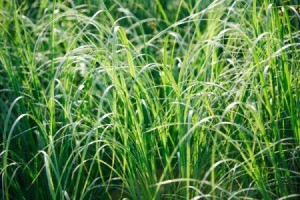
Hardiness Zone: 6b
Bob H from northern UT
Bob,
As you already know, Johnson grass is tough as nails and hard to eradicate! A single plant can produce over 5,000 seeds that can lay dormant for up to 20 years. Ugh! Unless you're dealing with a small amount, I don't recommend trying to "pull it out" because the rhizomes usually break off easily and are left in the ground to spread. Besides, you're more likely to end up with a back injury from trying to pull these buggers out than you are likely to get rid of them. If you yard is heavily infested, digging them out is probably not a reasonable solution either. No good management solutions exist for this type of grass short of tilling everything up and starting over. Even that's a bad idea, because Johnson grass thrives where there has recently been a soil disturbance. So to that extent, I can only offer you a few suggestions.
The best advice I can give you is to keep established plants mowed down close to soil level. Repeated mowing (bi-weekly) will help starve the rhizomes of nutrients, eventually causing the plant to give up (we hope). Using a propane torch may also help, but be warned that some studies suggest this actually encourages re-growth when done in the spring. Late winter is a better time for torching. If you live outside city limits, heavy grazing (goats, geese, or sheep) will also help reduce plant vigor as well as spot treatment using herbicides.
If some patches of the grass are in lower concentrations in some areas, digging or tilling is effective providing that you remove all of the rhizomes (don't just chop them up with a tiller or you will end up with a thousand more little starter rhizomes). Reseed immediately with the appropriate grass seed and keep all other Johnson grass mowed down to prevent it from spreading to the newly disturbed area by seed. You're probably going to have to employ a number of these strategies (and a few years of patience) in order to rid yourself of this invasive menace completely.
Good luck!
Ellen
I've been tackling the same problem. Pulling the entire plant up, roots and all, does seem to work. I try to do a section of the yard after each rain, when they are easiest to pull.
Our local Koöperasie (shop selling agricultural products) advised me to spray with Hormoban. It will not kill the grass.
Wait for one of those April weeks that has had rain more than once or thoroughly water the area to be weeded. Grasp the grass as close to the ground as you can before you pull. Shake the dirt from the roots and save the grass to mulch over the area after you've laid down several layers of newspaper. If you routinely pull small areas of grass, you'll be surprised how much ground you can cover over the spring and summer.
Alexa from northern Utah
I have it in asparagus and blackberries. The sure way is to get some glyphosate concentrate (roundup), about 45% concentration. I cut the johnson grass off about 6" tall and daub the stump with the roundup concentrate. 100% control. Be sure to use gloves as roundup causes cancer according to some studies. The stumps will turn yellow after several days and the rhizome dies. In large patches, spray 1-1/2 oz of concentrate per gallon on a still day with a hand sprayer. Again - this stuff is dangerous - spray from well back. Do not increase the strength when spraying, as too much will just kill the tops and then the rhizomes will re-sprout. The use of the concentrate also works to kill trees when cut, (such a honey locust and osage orange) which sprout from the stump. Just paint the stump with the concentrate.
My issue with Johnson's Grass and Asparagus is my dad has well over 200 asparagus while in a small area it may be fesible for the Round up but our garden is over 1/4 acre and over the years he has planted it in different places. The Johnson grass is very bad and it is hard to weed but that is the only was I can do it cause if I were to try and put round up om I am sure I would get it on some of the asparagus it is a very tedious job
I got this from another in a chat room I have been unable to find again, but their advice has been invaluable to me. My garden beds were so over run with johnsongrass it rendered them unusable. I cut off the stalks about 4 to 6" above the ground, then using a nasal mister, I placed a drop of concentrated roundup on each cut stalk. My first treatment gave me about an 80% kill rate. I have treated the area several times over, some of these things a really stubborn, but each time less come back.
As odd as it sounds, I took some advice from an old friend and spread and cut it short and then spread sugar with a lawn spreader.
It took about two years of mowing and sugar, but it worked.